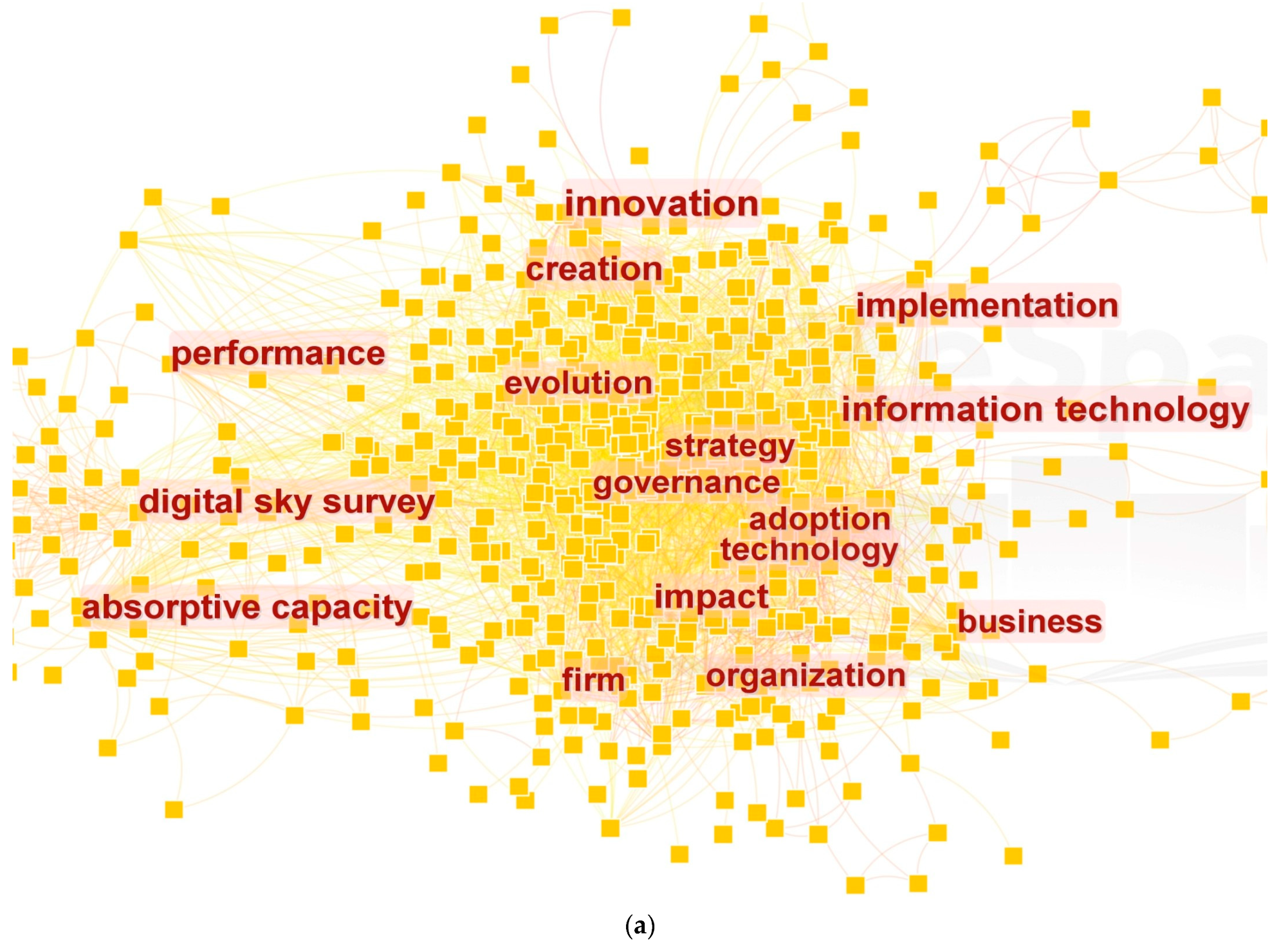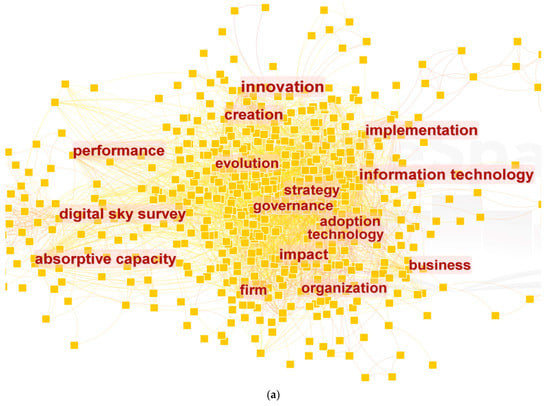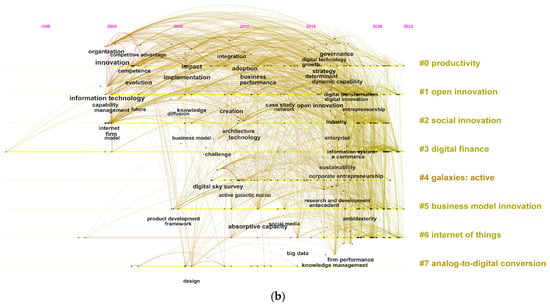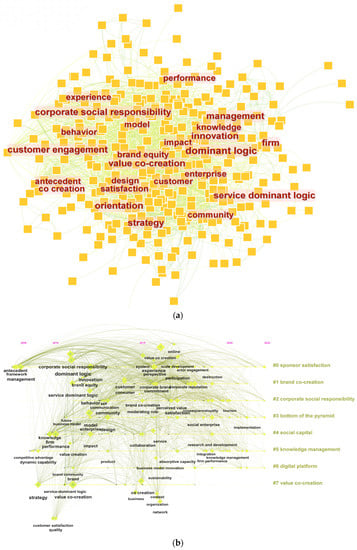You're using an outdated browser. Please upgrade to a modern browser for the best experience.
Please note this is a comparison between Version 1 by Huimin Ji and Version 2 by Camila Xu.
The innovation ecosystem guides the transition from individual value creation to multi-actor value co-creation by coordinating the interests of multiple parties for cross-border cooperation and enhancing the efficiency of technological innovation and resource integration in the system.
- digital innovation ecosystem
- value co-creation
- differential game
1. Introduction
With the incremental innovation and breakthrough of the new generation of information technology, intelligence, networking, and digitalization are developing deeply. The digital economy has become a new driving force for economic development, disrupting how enterprises obtain sustainable competitive advantage [1]. The innovation ecosystem guides the transition from individual value creation to multi-actor value co-creation by coordinating the interests of multiple parties for cross-border cooperation and enhancing the efficiency of technological innovation and resource integration in the system [2]. The innovation ecosystem value co-creation is based on the value galaxy and value network theory and emphasizes the discontinuous, interactive, and non-linear characteristics of the value co-creation process. Focusing on inter-actor collaboration, resource sharing, and symbiotic evolution, it has become a new paradigm for studying complex innovation phenomena [3]. With the rapid development of digital technology, the operation and development of innovation ecosystems have also incorporated digital elements, not only emphasizing the use of digital resources, digital technologies, and digital technology facilities as critical elements of innovation but also reshaping the value co-creation logic of innovation subjects [4]. Building a digital innovation ecosystem is a crucial channel to breaking industry, regional, and enterprise boundaries and realizing digital value co-creation. Nowadays, more and more enterprises make digital innovation ecosystems to achieve interactive delivery of value [5], further promoting the breakthrough of digital technology innovation barriers and boundary extension. Haier, Facebook, Google, Amazon, and many other digital natives have formed open digital innovation ecosystems to gain competitive advantages continuously. Digital innovation ecosystems are loosely interconnected networks formed by firms and other innovation agents. All participating agents collaborate to participate in value co-creation through shared technologies, knowledge, and skills. Still, significant differences exist in the roles these innovation agents assume and play [6][7][6,7].
Although the business and academic circles have reached a consensus on the digital innovation ecosystem’s core role and development prospects [8], the research is still in development. The current research results must provide more mature guidance for enterprises’ digital innovation practice. The study results on the dynamic optimization and coordination strategy of value co-creation of the digital innovation ecosystem are rare. Existing research mainly focuses on the value co-creation mechanism of the digital innovation ecosystem. Still, to a certain extent, there is path dependence, which makes it challenging to cross disciplinary barriers in this field and needs to be more conducive to the comprehensive deepening of the problem and theoretical formation of practice. There is an urgent need to adopt a decision-making approach to comprehensively and systematically grasp the nature of value co-creation decisions in the digital innovation ecosystem.
2. Enterprise Digital Innovation
2.1. Evolution Analysis of Enterprise Digitalization Research
The keyword time zone view reveals the evolutionary trends and development trends in the field [9], and the time zone view of digital innovation in enterprises is shown in Figure 1. Combined with the keyword evolution, the research hot spots in the field of enterprise digital innovation are divided into three stages. Phase I (2003–2010): theory construction and development period. Scholars have conducted in-depth research on digital technology and thus laid the foundation for developing enterprise digital technology. At this stage, research hot spots have been reflected in information systems, data diffusion, and collaborative innovation. Phase II (2010–2016): digital technology application period. Technology development and data technology advancement have driven the R&D capability of enterprise digital technology. The hot spots of research in the period are reflected in digital technology, business models, digital products, and technology governance. Phase Ⅲ (2017–2022): digital technology transformation period. Superimposed on the Industry 4.0 context, enterprises face urgent digital technology transformation challenges. The hot spots of research in this period are reflected in digital platforms, innovation ecosystems, value co-creation of innovation subjects, and digital services.



Figure 1. Keyword Time Zone View for Enterprise Digital Innovation. (a) Keyword co-occurrence network. (b) Evolution path knowledge map.
2.2. Current Status of Research on Enterprise Digitalization
In the era of the digital economy, digital innovation has become an essential engine for enterprises to cultivate new dynamic energy. Facebook, Google, Amazon, etc., have been making breakthroughs in product, process, and business model innovation under digital technology, facilitating the acquisition and continuation of competitive advantages. Yoo and Henfridsson et al. first defined the concept of digital innovation [10]. They proposed that digital innovation is implementing new combinations of digital and non-digital resources to produce new products. Fichman and Santos et al. further suggested that the digital innovation process is divided into four stages: discovery, development, diffusion, and impact [11]. Porter and Heppelmann integrated digital technologies and traditional physical products and proposed that digital innovations have convergent properties [12]. Compared with the conventional innovation management theory logic, the digital innovation process is characterized by a looser innovation process, difficulty in determining the innovation subject in advance, and blurred boundaries between the innovation process and the innovation result. Digital innovation can face more severe challenges as digital technologies are embedded in traditional products and services, capable of generating new products and services that fundamentally change the nature of products and services [13][14][13,14]. To access and integrate different resources, enterprises rely on the unique environment of innovation incentives provided by digital technology platforms, which may harm competition and innovation [15][16][15,16]. Technologies such as intelligent Internet, cloud computing, and big data in the digital context are changing the industry’s structure and competitive nature while impacting organizational change, performance, and digital entrepreneurship. Digital platforms and ecosystems are places where enterprises create and capture value, facilitating new ways for participating actors to build knowledge and relationships and providing new ways for global customers to develop and deliver value [17].3. Digital Innovation Ecosystem
The innovation ecosystem concept originates from the ecology field, an organic combination of ecology, system science, and innovation theory. After Tansley introduced the concept of “ecosystem” in 1935 [18], scholars have enriched and extended the idea of an innovation ecosystem. Moore first introduced the concept of corporate ecosystems in 1993 by the analogy of biological systems to corporate competition [19]. Adner subsequently pointed out that innovation ecosystems are open systems that link the individual and the whole [20]. Since then, the innovation ecosystem has undergone an iterative spiral from “sustainable development” to “open innovation” and from “value creation” to “value co-creation”. The digital innovation ecosystem is a complex network system of several subjects and organizations relying on digital technology for products and services, featuring digitalized innovation elements, virtualized participating issues, and ecological inter-subject relationships [21]. The circular flow of data elements promotes the heterogeneity of innovation subjects in the digital innovation ecosystem, the complexity of resource integration and sharing process, and the challenge of technological innovation research and development [22]. Because of these significant differences, the cross-domain flow of innovation resources and value distribution becomes possible, so the value co-creation of the digital innovation ecosystem has a more significant trend of iteration and upgrading [23]. Different innovation subjects and environments in the ecosystem rely on digital technology to realize the combination of digital and non-digital resources, stimulate continuous endogenous innovation within the system, and make digital innovation more stable and sustainable [24][25][24,25]. On the one hand, it reflects the inherent characteristics of the innovation ecosystem; on the other hand, it highlights the emerging technologies in the digital innovation environment [26]. Scholars have revealed the internal logic and importance of multiple innovation subjects participating in value co-creation in the digital innovation ecosystem from different perspectives. Suseno and Laurell et al. proposed that a digital innovation ecosystem is an organization that uses digital technology to create new products and values and has a strong interactive relationship with stakeholders [27]. Senyo and Liu et al. believed that the digital innovation ecosystem reflects the impact of digital transformation on the innovation ecosystem. Digital technology is not only the object of innovation but also the promoter of innovation activities [28]. Beliaeva and Ferasso et al. conducted an exploratory case study of an IT company in Brazil [29]. They concluded that there are significant differences in the participants and relationships supporting the innovation ecosystem during the evolution of enterprise digital capability from low to vigorous. Based on the background of Industry 4.0, Benitez, Ayala, and Frank concluded that the innovation ecosystem promotes the resource integration of SMEs. Moreover, with the support of the Internet of Things digital technology, innovation ecosystem members collaborate to realize value creation [30].4. Multi-Subject Value Co-Creation
4.1. The Evolution of Multi-agent Value Co-Creation Research
The keyword time zone view of value co-creation in industry is shown in Figure 2. Combined with the evolution of keywords, the research on value co-creation shows a trend of “binary relationship–simple system–complex system network relationship”. The research results of value co-creation of the innovation ecosystem are increasingly abundant. Meanwhile, the current research results can be divided into stages: the subject and initiation method of value co-creation, co-creation channels, and co-creation forms and processes.
Figure 2. Keyword time zone view for enterprise value co-creation. (a) Keyword co-occurrence network. (b) Evolution path knowledge map.
